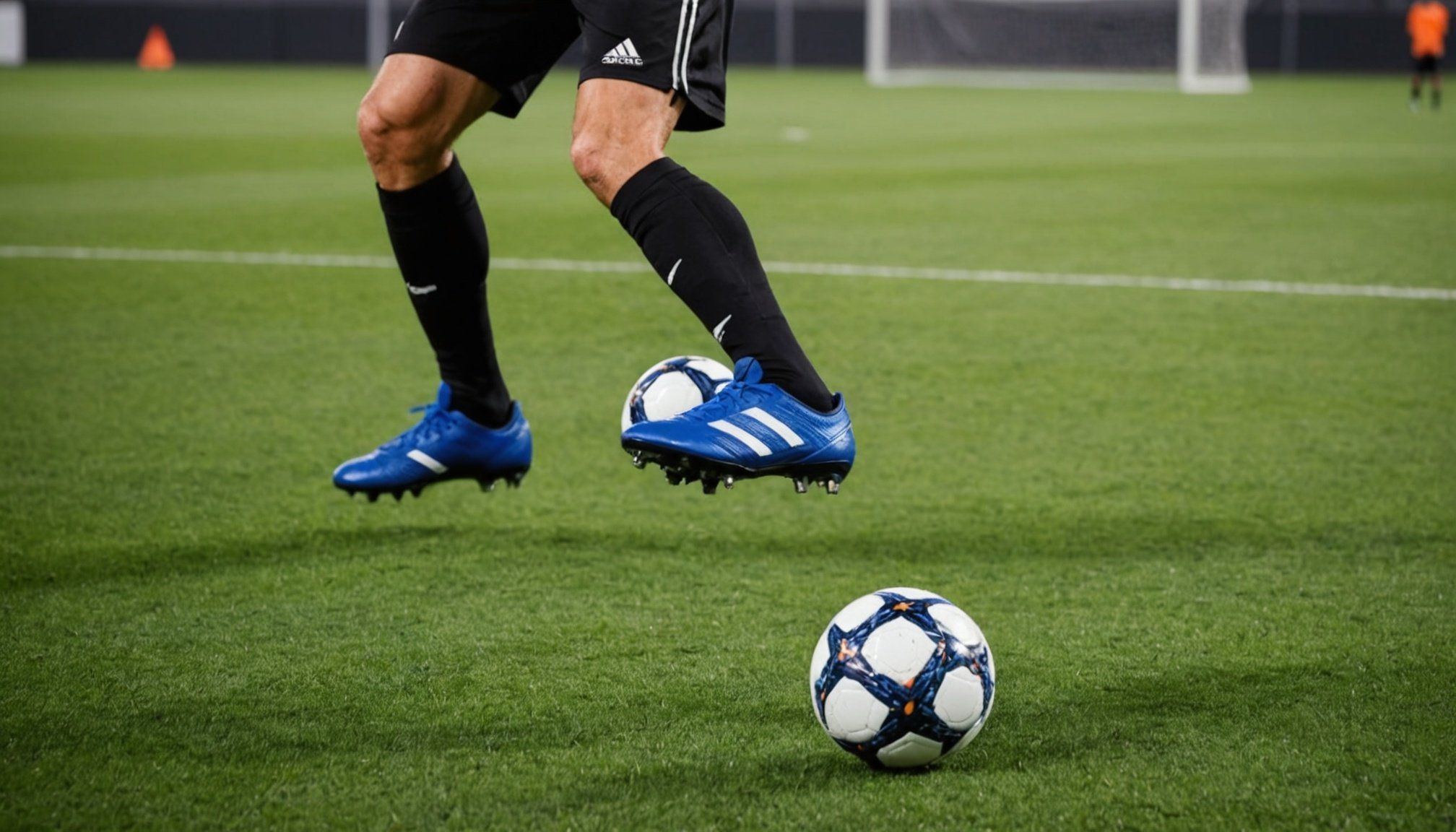Importance of Left-Footed Kicking for Right-Dominant Players
Developing left-footed kicking abilities is a game-changer for right-dominant players, significantly impacting their overall performance on the field. Ambidexterity in soccer enhances versatility, allowing players to make more strategic choices during gameplay, thus confusing opponents and opening up unexpected scoring opportunities. Mastering the art of ambidexterity doesn’t only diversify a player’s tactical options but also boosts cognitive skills.
For right-dominant players, skill development in the non-dominant foot isn’t just about evening out abilities, but about becoming a well-rounded player. By enhancing left-footed skills, players increase their potential and improve team dynamics. This proficiency allows for seamless gameplay during transitions between possessions, offering a more unpredictable offense.
Have you seen this : Enhancing youth football talent: cutting-edge cognitive skills training approaches in football academies
Coaches emphasize the benefits of mastering weak foot techniques, noting that it builds adaptability and resilience. Professional insights suggest creating practice sessions focused on the weaker foot can increase athletic confidence. They recommend incorporating skill development routines that encourage the use of both feet, as this hones balance and reduces dependence on just the stronger foot, leading to improved agility and decision-making under pressure.
Overview of Unique Drills for Left-Footed Kicking
To improve left-footed kicking, players must engage in creative, structured drills that target skill enhancement and develop ambidexterity in soccer. This approach equips right-dominant players with tactical advantages by broadening their ability to maneuver and execute plays with both feet confidently.
Also read : Elevate team morale: proven techniques for football managers to inspire confidence in challenging moments
Drill 1: The Target Kick
This drill focuses on precision and control. Players place cones or markers as targets and practice hitting them using their left foot. The objective is to improve accuracy in delivering powerful, directional kicks. By consistently practicing this drill, players enhance their ability to spot and hit specific targets during intense matches.
Drill 2: Dribble and Cross
Dribbling with the left foot towards a set point before executing a cross sharpens foot coordination and control. Emphasizing fluid dribbling and timely crossing boosts confidence during gameplay, enabling players to deftly navigate through defenders while maintaining ball control.
Drill 3: Wall Passes with Left Foot
Wall passes involve repeatedly passing the ball against a wall using the left foot. This not only refines passing accuracy but also raises overall reaction speed, preparing players for quick decision-making. Regular practice of these drills results in substantial game-time improvement and fosters a stronger overall player profile.
Integrating Drills into Regular Practice Sessions
Incorporating drills into practice is essential to boosting overall performance and ambidexterity in soccer. Consistent practice integration ensures skill development, reaping long-term benefits for right-dominant players.
Strategies for balancing your training routine are crucial for seeing improvements in left-footed kicking. To maintain equilibrium between dominant and non-dominant foot exercises, allocate dedicated sessions for specific drills. Prioritize equal time spent on each foot to develop well-rounded soccer skills effectively. This balanced approach not only strengthens weaker foot abilities but also reinforces strong foot skills, resulting in improved agility and versatility on the field.
To sustain motivation and ensure consistency, consider varying practice sessions. Rotate unique drills to keep training dynamic and engaging. Creating a feedback loop with peers or coaches can provide encouragement and reinforce progress, building confidence over time. Setting both short-term and long-term goals can further enhance motivation, ensuring players are consistently engaged and focused on their development journey.
Ultimately, making soccer drills a regular part of your practice routine is a powerful move toward overall skill enhancement. Such practice integration is instrumental in achieving high-level performance and adaptability during matches.
Benefits of Practicing with the Non-Dominant Foot
Practicing with the non-dominant foot offers several advantages, enhancing both versatility and confidence on the soccer field.
Improved Game Versatility
Training the non-dominant foot amplifies a player’s ability to respond to diverse game scenarios. This skill enhances the flexibility to shift directions and execute plays seamlessly with either foot. For example, players can confidently face opponents from various angles, effectively widening the tactical options available during high-pressure situations. It allows players to maintain up-tempo passes and make quick, precise shots, increasing overall scoring chances.
Enhanced Confidence on the Field
Mastering techniques with the non-dominant foot significantly boosts a player’s self-assurance. With heightened confidence in their skills, players are more likely to take calculated risks, knowing they can rely on both feet. This psychological advantage plays a critical role in maintaining control and composure, helping players perform under pressure. When players trust in their balanced abilities, they are more engaged and proactive on the field, actively contributing to their team’s success.
By focusing on skill development of their non-dominant side, players not only enhance their tactical prowess but also enjoy the psychological benefits of enhanced confidence in their dual-foot capabilities.
Additional Resources and Motivational Insights
Unlocking the full potential of left-footed kicking doesn’t have to be daunting. When seeking training resources, start with video demonstrations and online tutorials tailored for ambidexterity in soccer. These resources provide visual guidance, helping players understand and replicate the mechanics of effective skill development.
Experienced players and coaches often share motivational insights that can be incredibly beneficial. By recounting their challenges and successes, they offer encouragement and practical advice. Testimonials highlight the importance of patience and persistence when enhancing your weaker foot, assuring players that mastery is achievable with dedication.
Embrace the learning process as part of personal growth. Here are some motivations to keep you moving:
- Witness marked improvement by revisiting your progress regularly.
- Celebrate small victories as you build towards major milestones.
- Fuel your passion by joining forum discussions or community groups of like-minded players.
Ultimately, adopting a proactive approach in seeking additional resources and motivational insights builds a supportive network, encourages continuous learning, and empowers players to confidently enhance their left-footed skills.
Importance of Left-Footed Kicking for Right-Dominant Players
The essence of left-footed kicking lies beyond simply having a versatile repertoire. It fundamentally reshapes how players navigate the pitch, equipping them with greater ambidexterity in soccer. This proficiency gives athletes the strategic leverage to outwit the opposition, offering unpredictable plays and superior skill development.
Boosting left-sided skills isn’t just supplementary—it’s transformational. Right-dominant players become tactically agile, poised to transition seamlessly between offensive and defensive roles. Emphasizing left-footed techniques cultivates a holistic player profile, vital in scenarios demanding quick turns and unexpected shots.
Professional insights underscore that integrating the weaker foot in training routines enhances neural pathways, quickening response times. Coaches highlight real-life instances where players, initially less comfortable with their non-dominant foot, eventually outperform expectations due to focused practice. The ripple effect of balanced training resonates through improved cognitive adaptability under pressure.
Thus, strengthening left-footed capabilities is not just about evening out physical prowess. It’s about embracing growth, leveraging soccer training, and aiming for comprehensive skill enhancement. The mastery of left-footed moves propels players toward excellence, ensuring they remain formidable opponents in any match-up.











